
Review Journal of Autism and Developmental Disorders
Scope & Guideline
Advancing knowledge in autism research.
Introduction
Aims and Scopes
- Systematic Reviews and Meta-Analyses:
The journal emphasizes the importance of systematic reviews and meta-analyses, providing comprehensive evaluations of existing research to synthesize findings across studies, particularly in interventions and assessments related to autism. - Intervention and Treatment Research:
There is a strong focus on evidence-based interventions for individuals with autism and developmental disorders, exploring various therapeutic modalities and their effectiveness across different populations. - Parent and Family Perspectives:
Research examining the experiences, challenges, and needs of parents and families of autistic individuals is a core area, emphasizing the importance of caregiver involvement in interventions and support systems. - Diversity and Inclusion:
The journal addresses issues of diversity in autism research, including cultural, linguistic, and gender differences, and the implications for interventions and access to services. - Neurodevelopmental Perspectives:
Research that explores the neurodevelopmental aspects of autism, including co-occurring conditions, is a prominent theme, enhancing understanding of the complexities associated with autism spectrum disorders.
Trending and Emerging
- Telehealth and Remote Interventions:
There is a significant increase in research focusing on telehealth and remote delivery of interventions, especially following the COVID-19 pandemic, showcasing the adaptability of autism services. - Neurodiversity and Strength-Based Approaches:
Emerging discussions on neurodiversity and strength-based approaches are gaining traction, advocating for recognizing the unique strengths of autistic individuals rather than focusing solely on deficits. - Intersectionality in Autism Research:
Research that explores the intersection of autism with various identities (e.g., gender, culture, socioeconomic status) is increasingly prominent, emphasizing the need for inclusive research practices. - Mental Health and Co-occurring Conditions:
There is a growing focus on the mental health of autistic individuals and the prevalence of co-occurring conditions, such as anxiety and depression, highlighting the need for comprehensive support strategies. - Technology Integration in Interventions:
The integration of technology, including apps and virtual reality, in autism interventions is trending, reflecting the increasing role of technology in education and therapy for autistic individuals.
Declining or Waning
- Traditional Behavioral Interventions:
While behavioral interventions remain important, there is a noticeable decline in the focus on traditional applied behavior analysis (ABA) methods, as newer, more holistic approaches are gaining prominence. - Single-Case Studies:
Research utilizing single-case experimental designs has decreased, possibly due to a shift towards larger scale studies and meta-analyses that provide broader insights into autism interventions. - Generalized Autism Awareness Campaigns:
There seems to be a waning interest in general awareness campaigns without a research-based focus, as the journal shifts towards more evidence-driven discussions and studies. - Pharmacological Interventions:
Research on pharmacological treatments for autism appears to be less frequent, which may suggest a growing preference for non-pharmacological interventions and holistic approaches to treatment. - Crisis Response Research:
There has been a decline in studies focused solely on crisis responses related to autism, such as emergency interventions, as the field increasingly emphasizes preventive and supportive strategies.
Similar Journals

PSYCHOLOGICAL REVIEW
Advancing Knowledge in Psychology and Beyond.PSYCHOLOGICAL REVIEW, published by the American Psychological Association, stands as a premier journal within the field of psychology, boasting an impressive track record since its inception in 1894. With an impressive impact factor and a distinguished position in Q1 quartiles for both History and Philosophy of Science and Miscellaneous Psychology, this journal is recognized as a leading source of innovative research and critical analysis. Consistently ranked in the top tier, it holds the 17th position out of 216 in general psychology according to Scopus, reflecting its significance and the high caliber of scholarly contributions it features. While the journal is not open access, it provides comprehensive insights geared towards researchers, professionals, and students keen to deepen their understanding of psychological theories and practices. With a commitment to fostering intellectual discourse, PSYCHOLOGICAL REVIEW is essential for anyone engaged in the evolving landscape of psychological research.

Psicologia Clinica dello Sviluppo
Fostering insights that shape the future of psychological practice.Psicologia Clinica dello Sviluppo, published by SOC ED IL MULINO in Italy, is a noteworthy journal that focuses on the expansive fields of clinical and developmental psychology. Since its inception in 1998, the journal has been committed to disseminating high-quality research that bridges theoretical frameworks and practical applications within these domains. With its ISSN 1824-078X and E-ISSN 1824-078X, the journal provides a platform for scholars to explore critical issues in psychological development and clinical practice. Despite recent rankings placing it in the fourth quartile across both Clinical Psychology and Developmental and Educational Psychology categories, the journal is dedicated to fostering a growing body of knowledge that can influence policy and practice. Researchers, professionals, and students will find valuable insights in its contents, contributing to the advancement of psychology as a science and a profession. The journal accepts submissions and actively encourages contributions that tackle contemporary challenges in the field.
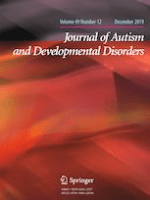
JOURNAL OF AUTISM AND DEVELOPMENTAL DISORDERS
Championing rigorous research for meaningful change.JOURNAL OF AUTISM AND DEVELOPMENTAL DISORDERS, published by Springer/Plenum Publishers, is a premier academic journal dedicated to advancing knowledge in the field of autism and related developmental disorders. With an impressive impact factor reflecting its reputation for rigorous peer-reviewed research, this journal has firmly established itself within the Q1 category of Developmental and Educational Psychology, ranked #32 out of 360 journals in its category, placing it in the top 91st percentile. The journal covers a broad range of topics, including intervention strategies, developmental trajectories, and the neurobiology behind autism spectrum disorders, making it an essential resource for researchers, educators, and clinicians alike. Since its inception in 1979, the journal has maintained a commitment to disseminating significant findings that can contribute to better understanding and support for individuals with developmental disorders, promoting interdisciplinary dialogue and collaboration. While it is not offered as open access, the Journal of Autism and Developmental Disorders remains a vital platform for the dissemination of transformative research in this crucial area.

CoDAS
Connecting scholars and practitioners in the realm of communication disorders.CoDAS, an esteemed academic journal published by the SOC BRASILEIRA FONOAUDIOLOGIA, serves as a leading platform for interdisciplinary research within the realms of linguistics, speech, and hearing sciences. Established as an Open Access journal in 2013, it ensures broad dissemination and accessibility of scholarly work, significantly benefitting researchers, clinicians, and students alike. Based in Brazil, CoDAS has garnered credibility with its impressive Q2 ranking in Linguistics and Language, as well as its rankings in Otorhinolaryngology and Speech and Hearing categories, reflecting its substantial contribution to these fields. The journal's impact is underscored by its robust Scopus rankings, including the 67th percentile in Language and Linguistics. With a commitment to fostering innovative research and bridging gaps between theory and practice, CoDAS continues to play a vital role in advancing knowledge and clinical practices in communication disorders and auditory sciences.
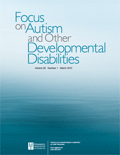
Focus on Autism and Other Developmental Disabilities
Empowering professionals with cutting-edge research.Focus on Autism and Other Developmental Disabilities, published by SAGE Publications Inc, is an esteemed academic journal dedicated to advancing the understanding of autism and related developmental disorders. With a significant publication history dating back to 1986, this journal encompasses a wide range of interdisciplinary research, addressing key areas such as cognitive neuroscience, neurology, pediatrics, and mental health. The journal features a robust peer-review process, ensuring the dissemination of high-quality research critical for professionals in the field. While it is not an open access journal, Focus on Autism offers various access options for academic institutions and individuals, fostering an environment of shared knowledge and collaboration. With its recent categorization in the Q2 and Q3 quartiles across multiple fields within medicine and neuroscience, it stands out as a valuable resource for those looking to explore the complexities of developmental disabilities. Researchers, clinicians, and students alike will find this journal to be an essential platform for the latest findings, theoretical discussions, and clinical implications in the domain of autism and developmental disorders.
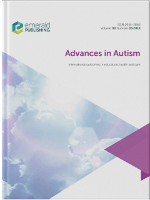
Advances in Autism
Exploring the Frontiers of Autism ResearchAdvances in Autism is a prominent academic journal published by Emerald Group Publishing Ltd, dedicated to the comprehensive exploration of autism spectrum disorders through the lenses of Cognitive Neuroscience, Developmental Psychology, and Psychiatry and Mental Health. Since its inception in 2015, the journal has made significant strides in disseminating high-quality research and fostering interdisciplinary collaboration within its diverse scope. With a respectable 2023 impact factor placing it in the Q3 category across multiple relevant fields, including Neurology and Clinical Psychiatry, Advances in Autism serves as an essential resource for researchers, practitioners, and students alike, aiming to advance the understanding of autism and its related challenges. Although currently not open access, the journal provides various subscription options to facilitate widespread access to its cutting-edge insights and empirical studies, making it an indispensable tool for anyone invested in autism research.
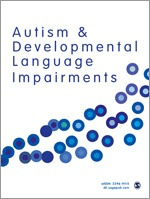
Autism & Developmental Language Impairments
Championing progress in autism and language development.Autism & Developmental Language Impairments is a pioneering peer-reviewed journal published by SAGE Publications Inc that focuses on advancing the understanding of autism spectrum disorders and language impairments across the developmental spectrum. Since its inception in 2016, this open access journal has provided a platform for researchers, practitioners, and educators to disseminate innovative research findings, clinical practices, and theoretical insights, reaching a global audience. The journal is notably indexed in prestigious databases and has established its credibility with a remarkable Rank of Q2 in both Clinical Psychology and Developmental and Educational Psychology as of 2023, solidifying its importance in these vital fields. Based in the United Kingdom, it addresses crucial issues in mental health, reflecting a commitment to fostering advancements that seek to enhance the lives of individuals affected by developmental language impairments. As it converges into its next phase from 2016 to 2024, Autism & Developmental Language Impairments continues to play an essential role in bridging gaps between academia and practice, making it an invaluable resource for researchers, clinicians, and students dedicated to this critical area of study.
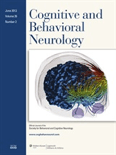
Cognitive and Behavioral Neurology
Illuminating the Pathways of Cognitive and Behavioral HealthCognitive and Behavioral Neurology is a prominent peer-reviewed journal dedicated to advancing the understanding of cognitive and behavioral aspects of neurological disorders. Published by Lippincott Williams & Wilkins, this journal has established itself as a vital resource for researchers, clinicians, and students in the fields of cognitive neuroscience, neuropsychology, and psychiatry. With an ISSN of 1543-3633 and an E-ISSN of 1543-3641, it offers a robust platform for the dissemination of high-quality research, as evidenced by its positioning in the Q3 quartiles across various categories, including Cognitive Neuroscience and Psychiatry. The journal, which has been actively publishing since 2003, encourages innovative studies that explore the intersection of cognition and behavior in neurological contexts. As a vital contributor to the academic dialogue on these topics, it provides an essential archive of findings and discussions that inform clinical practice and educational approaches, reflecting its commitment to improving patient outcomes and enhancing neurological science.

Iranian Journal of Psychiatry and Behavioral Sciences
Cultivating Knowledge for a Healthier TomorrowIranian Journal of Psychiatry and Behavioral Sciences, published by BRIEFLAND, is a pivotal platform for scholars and practitioners in the fields of psychiatry and behavioral sciences. With its ISSN 1735-8639 and E-ISSN 1735-9287, this journal primarily caters to the Iranian context while fostering a global dialogue on contemporary issues in mental health, behavioral neurology, and biological psychiatry. Since its inception in 2007, the journal has committed to disseminating high-quality research and reviews, thereby contributing to its categorization in the fourth quartile (Q4) for both Behavioral Neuroscience and Biological Psychiatry as of 2023. Although currently lacking an open access model, the journal's accessibility to critical research discussions is vital for enhancing knowledge among researchers, professionals, and students alike. With emerging relevance in the Iranian mental health landscape, it aims to bridge gaps in understanding and promote evidence-based practices from 2007 to 2024 and beyond.
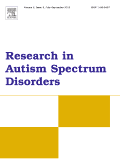
Research in Autism Spectrum Disorders
Advancing understanding through innovative research.Research in Autism Spectrum Disorders, an esteemed journal published by ELSEVIER SCI LTD, is dedicated to advancing the understanding of autism spectrum disorders through innovative research and scholarly articles. Since its inception in 2007, the journal has carved out a distinguished place in the field, reflected in its robust 2023 Impact Factor and Q2 ranking in key categories such as Clinical Psychology, Developmental and Educational Psychology, and Psychiatry and Mental Health. By bridging the gap between research and practice, this journal serves as a vital resource for researchers, professionals, and students alike, fostering collaboration and knowledge-sharing among those dedicated to improving outcomes for individuals with autism. Featuring a broad scope that encompasses various aspects of autism research, the journal remains committed to publishing high-quality studies that drive the conversation forward in this critical area of study. Access options for the journal's content are available under the Elsevier guidelines, ensuring that pivotal research reaches a wide audience.